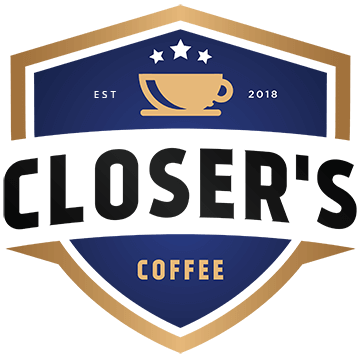For Part 1 of the Essential Selling Skills Bootcamp, click here. For Part 2, click here.
“The brutal fact is the number one reason for failure in sales is an empty pipeline and the root cause of an empty pipeline is the failure to prospect.” ― Jeb Blount
Learning Summary
Learn how to strategically balance prospecting across the various prospecting channels to give you a competitive advantage when connecting with prospects in the cluttered and competitive marketplace.
Subjects Covered
- Top Sales Prospecting Challenge
- Your Strategy of Prospecting defining the Who, How, Where, When and What of Prospecting
- Creative and Efficient Prospecting Techniques
Prospecting has and will always be the most important activity or discipline in sales. It what separates the superstars from the ones that are scraping by on second hand, hand-me-down leads.
Why do Sales Professionals need to prospect? When you break down the sales process, it is about offering the right solution to the right person at the right time.
Unfortunately, all these variables rarely line up in their own in the universe and that is why prospecting is crucial for your sales success.
The target of prospecting is to develop a database of potential customers to systematically engage with them to eventually convert into customers
However, there are many challenges when it comes to navigating the universe of prospecting. From identifying your buyer’s persona to targeting and using the right outreach methods to maintaining zest and focus.
- Lack of Prospecting Drive
- Not knowing where to start
- Not knowing how
- Not dedicating time to prospecting
- Lack of Targeting
- Not understanding the buyer’s persona
- Not knowing how to work with gatekeepers
- Not targeting the right people
- Not knowing how to reach out to the correct prospects
- Lack of research and customization
- Don’t research prospects before reaching out
- Don’t customize touchpoints for each prospect
Your Strategy for Prospecting: Defining the Who, How, Where, When, and What of Prospecting
“Every brand isn’t for everybody and everybody isn’t for every brand.” – Liz Lange
The Who: Involves breaking a market into segments and then concentrating your prospecting efforts on one or a few key sections.
- Demographic Segmentation is the most important criteria for identifying target markets, which is based on gender, age, income level, and marital status.
- Psychographic Segmentation divides the target market based on socio-economic class, personality, or lifestyle preferences.
- Buyer Persona is a semi-fictional representation of your ideal customer based on demographics, behavior patterns, motivations, and goals (Buyer Persona covered in depth in Modular 4)
The When: Involves the best time to reach out for your prospect.
Divide your day into two POWER HOURS for reaching out to prospects
- POWER HOUR 1, the beginning of the day is 8:00 am to 10:00 am.
- POWER HOUR 2, the end of the day is 4:00 pm to 6:00 pm.
- The worst period in the day is 11:00 am to 2:00 pm.
- Wednesdays and Thursdays are the best days to call leads — almost 50 percent better than the worst day which is Tuesday.
Tip: Whether you decide to go with the first or the second POWER HOUR, always make your prospecting calls in the same time frame.
The How and Where: Involves how and where to find your prospects
Deploy a multi-faceted and balanced approach to reach out and connect with more prospects. Use all available channels to reach out and connect:
- Asking for referrals
- Networking
- Telephone prospecting, Cold calling
- Following up on leads in your database
- E-mail prospecting
- Striking up conversations with strangers.
The What: It Involves what conversation with the prospect you will have and what is the end game of the contact.
A well-crafted script with the proper choice of words is very crucial in putting the prospect in the right frame of mind to listen to what you have to say.
- Start your engagement as a conversation, not a one-way pitch
- Easy on the artificial sales enthusiasm
- Raise curiosity
- Give context
- Ask for permission to carry on
- Ask questions
- Schedule the next steps
Creative and Efficient Prospecting Techniques: Proactively Pursuing Prospects
Asking for Referrals
Have A Structure in Asking for Referrals
Referrals are the most efficient and effective way of growing your prospect pipeline. Many sales professionals don’t ask for references because:
- They haven’t characterized the sources of referrals.
- They haven’t composed their referral elevator pitch.
- They haven’t structured a process for asking for referrals.
Tip: Compose a statement and practice it.
Referrals Characterization
Customer Referrals: They are referrals made by satisfied customers whom you have built a relationship with and they trust you.
- Focus on your satisfied clients.
- Provide value first, before asking.
- Be specific with your request.
- Develop a referral mindset.
- Stay connected with your customers.
Personal Referrals: They are referrals made by friends, family, and acquaintances.
- Educate your connection with what you offer.
- Explain to them your buyer’s persona.
- Agree with them on referral format or procedure.
- Assure them that you will add value.
- Keep on reminding them all the time and every time.
Professional Referrals: They are referrals made by professionals whom you have formed with a mutually beneficial relationship.
- Create your Sales Professional Network.
- Identify products or service your prospects might purchase alongside your product.
- Reach out to sales professionals at those organizations to get your network started.
Networking
Networking is one of the cornerstones of sufficient prospecting.
- You are networking to meet prospects.
- Remember that you are not there to sell, set appointments, or get leads. You are there to connect with people first.
- Show genuine interest in them by asking questions to build a connection.
- Following up after the networking event is key to making a connection.
Telephone Prospecting
“Every single time you pick up the phone, you’re getting closer to a yes.”
- The telephone is, has been and will always continue to be the most effective and efficient prospecting tool.
- The phone is the most efficient way to reach out to prospects if you are, prepared and organized. (Connect Call Preparation Covered in depth under the P.R.M Module and The Sales Skills Bootcamp)






